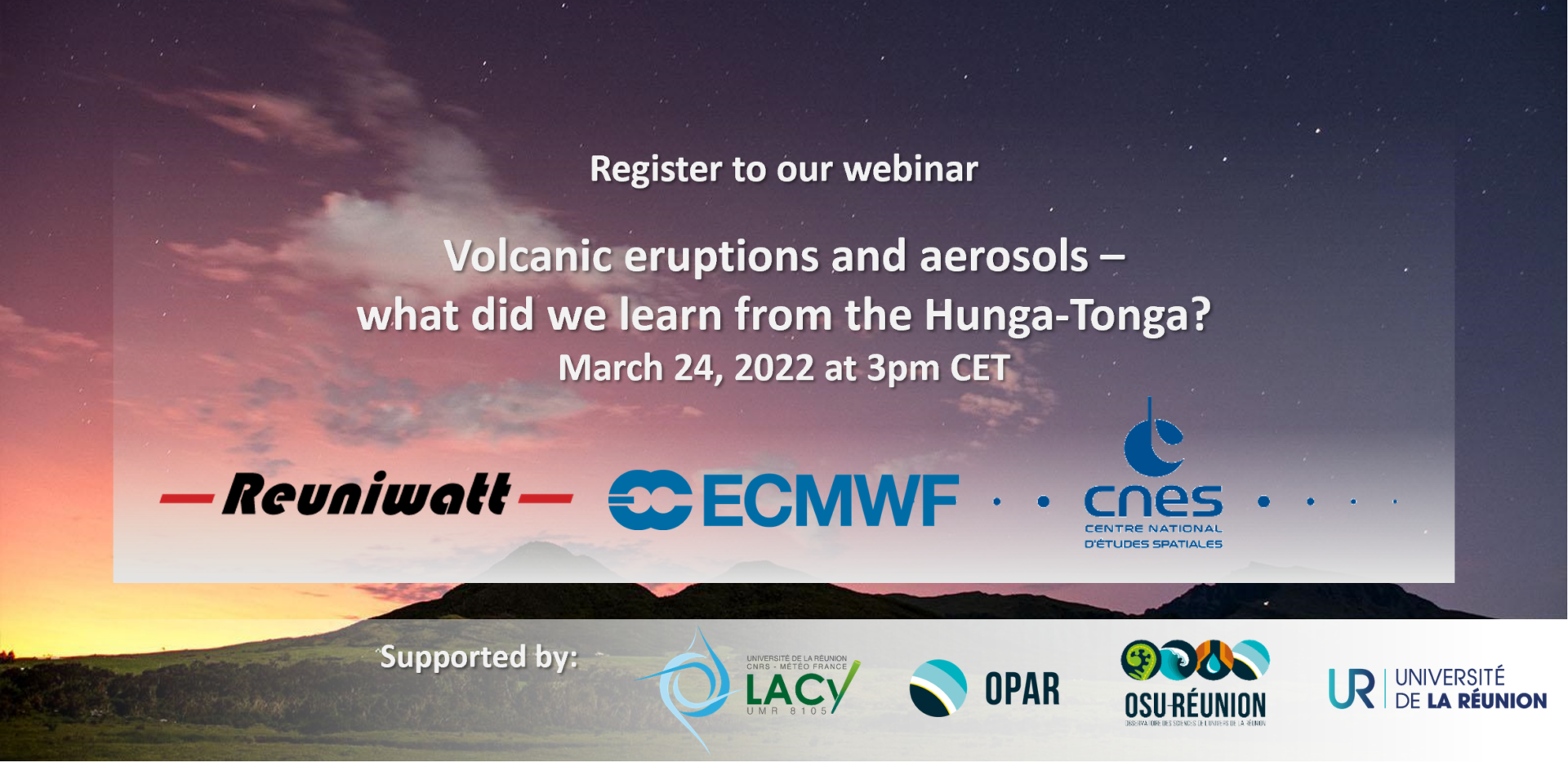[Webinar Series] Volcanic eruptions and aerosols – what did we learn from the Hunga-Tonga?
On January 15, 2022, the undersea volcano at Hunga Tonga-Hunga Ha’apai erupted. At the time, signals evaluated by ECMWF showed that material from the eruption rose higher than 20 km. According to recent research, it rose in fact to 58 km, and the event gained worldwide attention.[1]
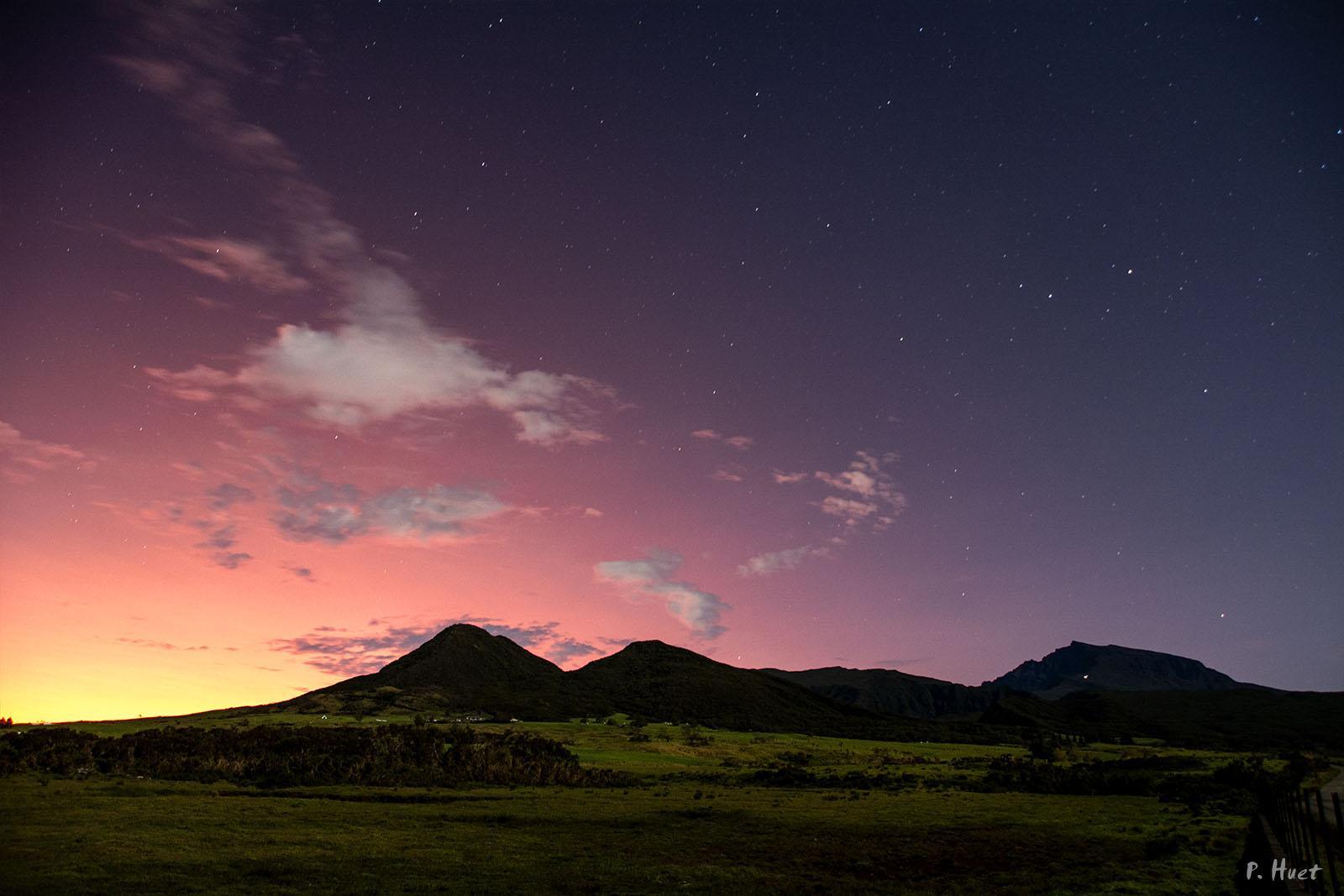
A volcanic sunset in Reunion Island after the Hunga-Tonga eruption (Photo by Patrice Huet)
The atmospheric composition affects our everyday life, health and electricity production. In this webinar, our experts will share how and why atmosperic scientists observe the mix of aerosols in our atmosphere and which effects resulted from the Hunga-Tonga eruption.
We are proud to have Dr. Vincent-Henri Peuch, Director Copernicus Atmosphere Monitoring Service at ECMWF, the European Centre for Medium-Range Weather Forecasts, on board as moderator. He will introduce the audience to the mix of aerosols in our atmosphere. Two experts, Dr. Alexandre Baron and Dr. Damien Ceus, will provide you with accessible scientific information from their perspectives with a focus on the effects of the Hunga-Tonga eruption. Dr. Alexandre Baron will introduce how you to how aerosols are observed and measured, including insights into the Maïdo atmospheric station in Reunion Island, how a LiDAR works, and give details on the transport of the aerosols from the site of the eruption and the remarkable features of the plume! Finally, Dr. Damien Ceus will put a focus on the effect of these aerosols on human activities. After introducing the function of Clear Sky Models to calculate the impact of aerosols, he will take a closer look at the impact of aerosols from Hunga-Tonga on renewable energy production worldwide.
We are kindly inviting scientists, professionals and interested amateurs, who want to learn more about the work of some of the leading observatories and the impact of aerosols from volcano eruptions on our everyday life and electricity production.
After this webinar you’ll have an understanding of:
About the speakers:
Dr. Vincent-Henri Peuch is Director of the Copernicus Atmosphere Monitoring Service (CAMS) at the European Centre for Medium-Range Weather Forecasts (ECMWF). He has been involved since 2003 in the design, development and implementation of Copernicus, the flagship Earth Observation programme of the European Union. A native of France, he obtained his PhD from Ecole Normale Supérieure de Lyon in 1996. He worked as a scientist for Météo-France for 15 years before joining ECMWF in 2011 to lead the precursor European R&D activities that eventually led to CAMS. He is an internationally respected scientist working on numerical modelling and data assimilation of air quality and atmospheric composition with over 100 peer-reviewed publications. He serves in several national and international scientific committees, including for the World Meteorological Organization and the World Health Organization.
Dr. Alexandre Baron is a postdoctoral researcher at the Laboratory of the atmosphere and cyclones (LACy, La Réunion University), specialized in aerosols processes and remote-sensing measurements by lidar. After studying fundamental physics at the University of Paris-Saclay, he completed a PhD at the Laboratory of Climate and Environmental Science (LSCE), funded by the CEA. Now beneficiating of a CNES postdoctoral fellowship, he is pursuing studies on aerosols transported across the Indian Ocean using instruments based in Reunion Island (OPAR Observatory), satellite observations, and atmospheric modelling products.
Dr. Damien Ceus obtained a PhD in Instrumentation for Astrophysics (Faculté des Sciences de Limoges – Laboratoire Xlim). He worked as a field engineer at Leosphere for 4 years and then as a metrology and support engineer at HGH Infrared Systems for 3 years. He joined Reuniwatt’s Toulouse office in the beginning of 2021 to take responsibility of Sky Imagers in the visible and the infrared wavelength domain. Damien manages the instrumentation team to ensure that each camera follows a series of tests and calibrations. He also participates in the product definition and development of new functionalities. He ensures that Reuniwatt maintains a high quality standard of production and that all our customers’ individual technical requests are answered.
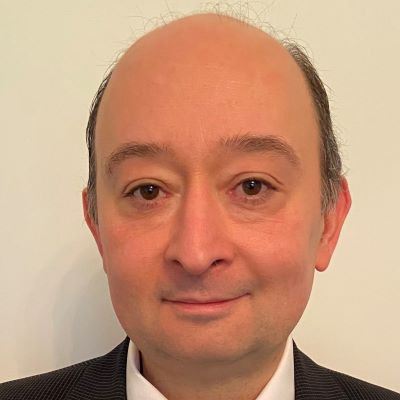
Dr. Vincent-Henri Peuch
Moderator
Director Copernicus Atmosphere Monitoring Service @ECMWF
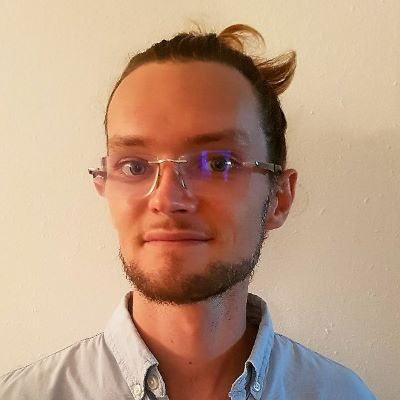
Dr. Alexandre Baron
Speaker
Postdoc @Laboratory of the atmosphere and cyclones, La Réunion University

Dr. Damien Ceus
Speaker
Sky Imager Expert @Reuniwatt

About ECMWF (ecmwf.int)
ECMWF is the European Centre for Medium-Range Weather Forecasts and both, a research institute and a 24/7 operational service. As an independent intergovernmental organisation, the ECMWF operates two services from the EU’s Copernicus Earth observation programme, the Copernicus Atmosphere Monitoring Service (CAMS) and the Copernicus Climate Change Service (C3S). They also contribute to the Copernicus Emergency Management Service (CEMS). The organisation was established in 1975 and now employs around 390 staff from more than 30 countries. ECMWF is one of the six members of the Co-ordinated Organisations, which also include the North Atlantic Treaty Organisation (NATO), the Council of Europe (CoE), the European Space Agency (ESA), the Organisation for Economic Co-operation and Development (OECD), and the European Organisation for the Exploitation of Meteorological Satellites (EUMETSAT).
About Reuniwatt (www.reuniwatt.com)
Reuniwatt is a major player in solar radiation and cloud cover assessment and forecasting. Based on solid Research and Development works, the company offers reliable products and services intended for professionals of various fields, making the best out of two key facets of meteorology: atmospheric physics and data sciences. A particular focus has been placed on solar energy forecasting, while developing cutting edge solutions to improve the short-term prediction of the solar resource.
The company has won many grants, including H2020’s SME Phase 1 programme, which makes Reuniwatt a European Champion with regard to innovation. Reuniwatt has also been selected among the national fast-growing companies to join the prestigious French Tech 120 programme in 2020.
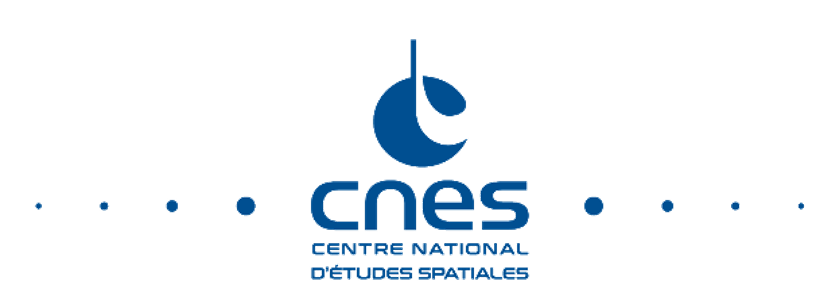
About CNES (cnes.fr)
CNES is the French Space Agency, a governmental organisation founded in 1961. As programme-focused agency and centre of technical expertise, CNES is responsible for shaping and implementing France’s space policy within the framework of international cooperation, particularly within Europe. CNES is a major source of proposals which aims at maintaining and developing France and Europe’s competitiveness and ensuring that they remain key players in the space domain.
CNES is supporting the postdoctoral research position of our webinar speaker Dr. Alexandre Baron at the La Réunion University. Other partners behind this research program include:

